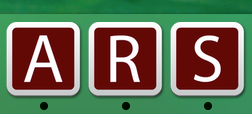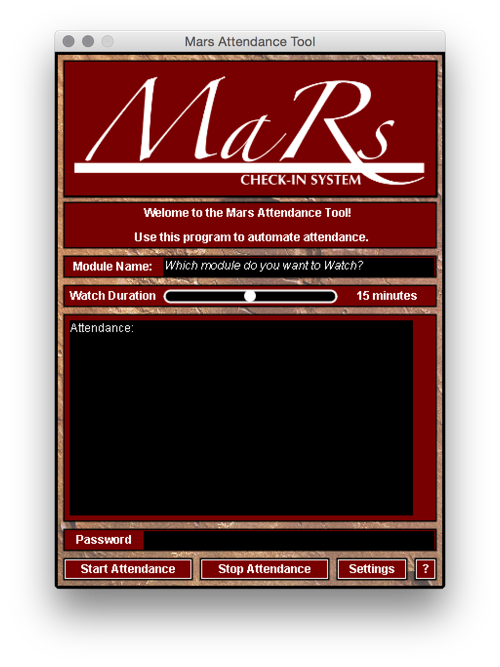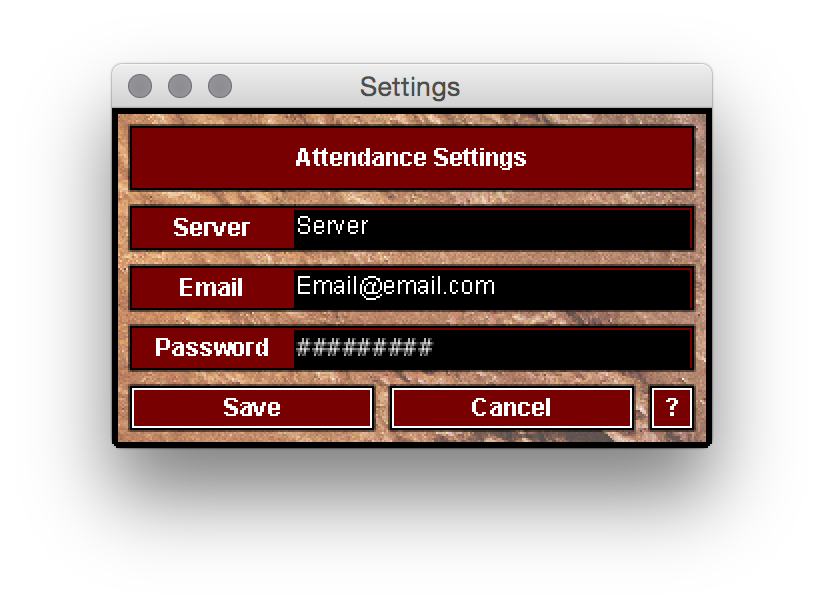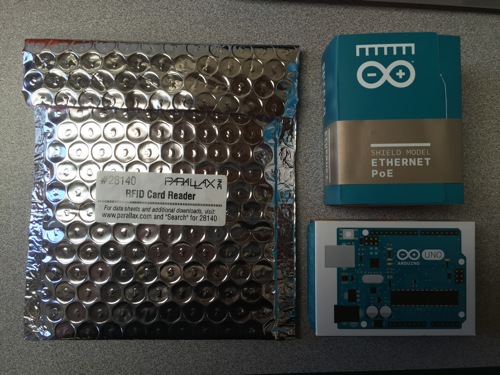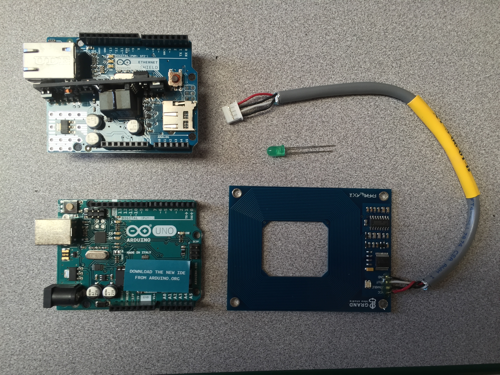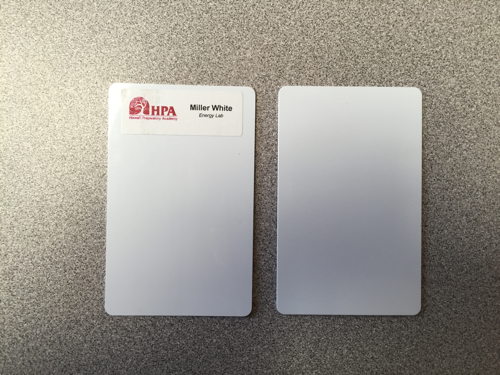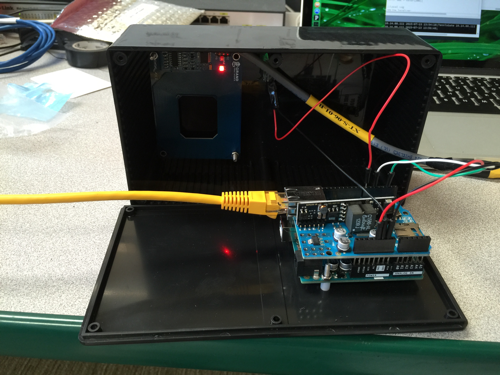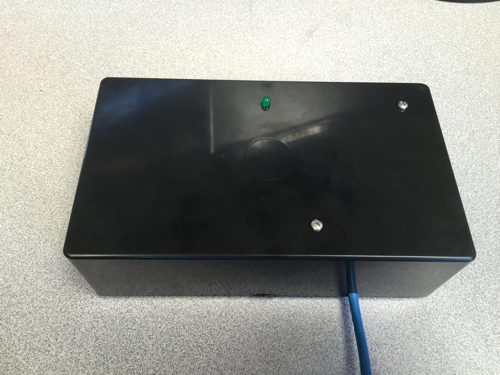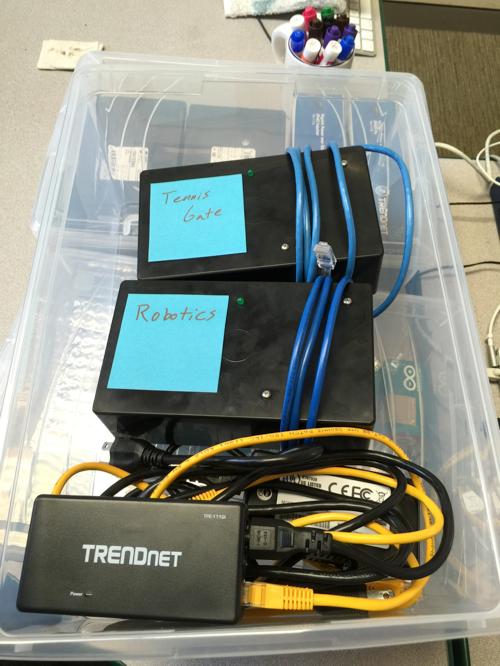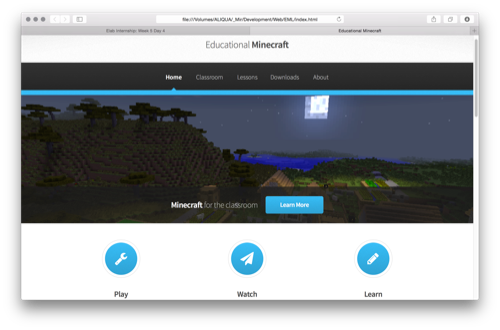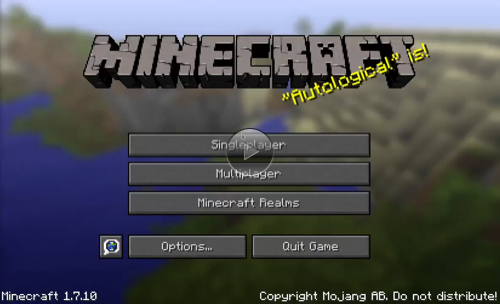Welcome to Minecraft!
Minecraft is an open source, sandbox computer game that allows you to build, destroy, and interact with the every aspect of the environment. In this lesson, you will learn how to move around and interact with the various blocks and devices within the game, gain a preliminary understand of what kinds of blocks exist in the game and how they are used, and meet the various other non-player entities that share this cubic world with you. This lesson is structured on the assumption that you have successfully downloaded the game and either the EML Full World or Learning the Ropes Lesson World. Both of those downloads are available here (link pending).
Starting the Game
When you first start Minecraft and log in, you encounter the start-up window with options of "Single Player", "Multiplayer", and "Minecraft Realms" as well as "Options" and "Quit Game". To begin playing, left click the "Singleplayer" tab. This brings you to the world selection. Select the world you wish to play (Either the "EML Full World" or "Learning The Ropes" lesson world) and click "Play Selected World". You will then spawn into the world, starting initially at Spawn.
Spawn
Spawn is the location to which you can always return after or during a lesson by selecting the "Return to Spawn" buttons throughout the full world. If you are playing on a Lesson World, The spawn area will simply be the entrance to the lesson. In the full world, Spawn is located inside a build with a large floating arrow above it that says "SPAWN". Inside Spawn are all of the lesson selections (again, only in the Full World) as well as the welcome signs and the basic instructions. Use this area to navigate to any lesson on the map.
First Login
During your first login, a prompt will appear in the bottom left of your screen with some basic instructions. Those instructions give you information about movement in Minecraft and welcome you to the world. To move, use the 'W' 'A' 'S' and 'D' keys to move forwards, left, backwards, and right, respectively. Moving your view area is accomplished by moving your mouse. To view a prompt that has disappear, press 'T'. This displays all prompt history. To exit from the prompt history, press the escape button.
Interacting with the Lesson Hub
All of the lessons are accessible through the Spawn via transportation kiosks. Each kiosk has a sign stating which lesson it is linked to and a button. Use right click to press the button. This will teleport you to the specified lesson. For this lesson, use the kiosk labeled "Minecraft: Learning the Ropes". If you mistakenly transport to a lesson, use the "Return to Spawn" buttons on the entrance gate. These will teleport you back to the Spawn building.
The Keyboard
Once you have teleported to "Learning the Ropes", the first prompt you encounter is the Keyboard tutorial. You have already learned that 'WASD' allow you to walk around and that 'T' brings up you prompt history.
Inventory
In addition, pressing 'E' will open your inventory. In creative mode, the default mode of the world, pressing 'E' will bring up a complete inventory of every block present in Minecraft. The various tabs on the top and bottom of the window navigate through the various types of blocks. The top right-most tab is a search tab, allowing you to type in the name of a block without having to sift through the other tabs.
To select a block from this inventory, left click it. This will pick up the block and attach it to your cursor. To drop a block, simply left click again. If you have dropped the block into an empty inventory slot, such as your hot bar or player inventory, the block will be placed into that space. To pick up a whole stack of materials, hold down shift and right click the material. left clicking while holding shift will send the block to the nearest open space in the next inventory window. Selecting the bottom right-most tab of the creative inventory window will take you to your player inventory. This area is carried with the player like a backpack and is accessible at all times in both creative and survival modes. The bottom line of nine boxes is called the hot bar. This is your "heads-up" inventory area that also appears on your screen when not viewing your inventory. The hot bar is navigable outside of the inventory window by either scrolling the mouse wheel or pressing numbers 1-9 on your keyboard. To exit all inventories, press escape or 'E'.
More Movement
'WASD' control horizontal motion at one speed. To jump, press spacebar. To print, press 'W' quickly twice, holding down the second press. In creative mode, you are able to fly. This is accomplished by pressing space twice quickly. While flying, hold spacebar to ascend and shift to descend. You automatically stop flying when you touch back down to the ground. Holding shift while walking will initiate "Sneak Mode", where you cannot fall off of an edge. Your point of view also changes slightly when in sneak mode, sinking just a small amount. The section following the keyboard prompt allows you to experiment with the various movement controls.
Block Use
After you have mastered movement within Minecraft, the next step is block interaction. You already know how to select blocks from your inventory and drag them to your hot bar. When a block is selected in your hot bar by scrolling or pressing 1-9, the block will appear in the bottom right of the screen where your hand used to be. This means the block is ready to be used. To destroy a block, left click once it is highlighted. You can tell a block is highlighted by a thin black boarder around the edges of the cube. To place a block, right click with the block in your hand. This will place the block on the highlighted surface. If there is nothing in your hand or no block is highlighted, right click will do nothing. Left click also serve to hit things.
Gravity
Most blocks in Minecraft do not obey gravity, being able to float without any structural attachment to the ground. Others however, including you the player, will fall when nothing is beneath you. Two types of gravity blocks are lava and water. Both can be poured from a bucket. Right click to pour the lava or water onto the selected surface. If you have an empty bucket, right clicking a source block of water or lava will cil the bucket. More information on the mechanics of Lava and Water is available on the Official Minecraft Wiki. There are two other blocks that obey gravity that are not liquids. Gravel and Sand exist as single blocks, but when places will fall until them are stopped by another block. These blocks are placed and destroyed in the same way as other blocks.
Hunger, Plants, and Farming
Hunger, Plants, and Farming are essential processes for a complete Minecraft experience. Though Hunger is not experienced in creative mode, growing plants or farming animals is applicable to a wide variety of machines and systems that can be built in either mode.
Hunger
Hunger does not affect players in creative mode. In survival mode, you will gradually become hungry as you participate in various survival activities. To eat, select an edible item (such as steak, apples, or zombie flesh) in your hot bar and hold down right click. You will continue to eat until you are satiated. Some foods sun as Zombie Flesh and Raw Chicken will give you for poisoning when eaten. The Official Minecraft Wiki goes into more detail about food and its effect on the player.
Plants
Plants grow in abundance in the Minecraft world. All plants are spawned only once in the creation of the world, however, and do not grow back naturally. Therefore, you the player are obligated to replant and maintain a sustainable Minecraft Ecosystem. Planting saplings, flowers, and grasses is accomplished by right clicking on a patch of open ground. Some plants, such as Cacti and Sugar Cane can only be planted on specific kinds of ground (sand). Tree saplings will eventually grow into full sized trees ranging from 6 to 30 blocks in height. Plants have many functions, from eating, gaining materials, and generating scenery. The Official Minecraft Wiki goes into more detail about plants, their growth, and the processes of use.
Farming
Plant farming is the primary means of acquiring food in survival mode. To plant a seed, you must first till a dirt block. This is accomplished by right clicking the ground with a hoe. If you wish to give the plant an optimal growth environment, water within a solid four block horizontal radius or directly beneath the tilled dirt will hydrate the soil. Any of the plants (Melons, Pumpkins, Wheat, Potatoes, and Carrots) will grow gradually through seven stages, eventually maturing into a harvestable adult. This process takes approximately 20 minutes. The Official Minecraft Wiki goes into more detail about plants, their growing, and farming techniques.
Tools and Weapons
Tools and Weapons are primarily useful in survival mode. However, some actions such as tiling soil, scooping water, or killing mobs efficiently are only accomplished with the help of a tool.
Tools
There are four kinds of primary tools: Pickaxes, Wood Axes, Shovels, and Hoes available in five different durabilities: Wood, Stone, Gold, Iron, and Diamond. Each tool is uniquely suited for its intended task (i.e. Wood Axes cut down trees better than Shovels) and the material it is made out of improves its lifespan and its efficacy. There are additional tools that do not come in varying types. Some of those tools are Fishing Rods, Buckets, Shears, Flint and Steal, Compasses, and Clocks.
Weapons
There are only two kinds of true weapons: Bow and Arrows and Swords. However, all tools and blocks can be used to hit things. Weapons deliver a much larger amount of damage than, say, a piece of steak.
To use a Bow and Arrow, both items must be present in your inventory. With the bow in your hand, hold down right click to pull back. The longer you hold down right click, the strong the shot will be, until you reach a full pull. To release the arrow, stop pressing right click. Aiming is accomplished by moving your mouse. If there are no more arrows left in your inventory, you cannot fire. The Official Minecraft Wiki goes into more detail about the distance and mechanics of arrow flight.
Swords are the primary melee weapon of the game and can be made out of one of the five before-mentioned materials. With each material, the innate amount of damage the sword deals out goes up. To swing the sword, left click. To block with the sword, hold down right click. Blocking will reduce any kind of entity-dealt damage such a bites or arrows. Blocking with a sword will not protect you from gal damage or explosions.
Building Materials
Minecraft is at its heart a building game. There are hundreds of different kinds of building materials available to you, all of which are readily accessible in your creative inventory. In survival, you must find and harvest a material to use it.
Ores
Ores and their associated minerals are the building blocks of most mine craft functions. The naturally occurring ores are Gold, Iron, Diamond, Emerald, Redstone, and Lapis Lazuli. For the purposes of building tools and weapons, stone and wood can also be considered ores. Each or when mined produces a drop of either the ore-block itself or an intermediate stage. If an ore block is dropped (such as in Gold and Iron), the block must be smelted to achieve the intermediate state (Gold and Iron Ingots). The other ores automatically drop their intermediate stage. These intermediate blocks can then be used in a multitude of functions or to create solid building blocks of that specific material, as displayed in the lesson.
Wool
Wool is the most diverse building material. It comes in 16 unique colors ranging from total Black to Magenta. Different colored wools are readily available in the creative inventory, but in survival must be dyed either on the sheep or in a crafting table. The Official Minecraft Wiki goes into more detail about the various dyes and their application in wool and other materials.
Wood
Wood is the most accessible of the building materials. Produced by trees, wood can be mined with any tool, including that piece of steak. when first mined, wood will produce a single log of that specific tree. This log can be converted into myriad types of other resources such as wooden planks, doors, and stairs. All wood items can also be burned in a furnace, but are not the most efficient kind of fuel.
Functional Blocks
Functional Blocks allow you to "make" something with a process otherwise unavailable in the game.
Crafting Table
The Crafting Table is the most important block in all of Minecraft. Within its 9-block interface, every other block in the game can be created from a select few basic blocks. For example, dropping a wood log into the crafting window will produce 4 blocks of wooden planks. 6 wooden planks arranged in a certain way within the crafting window will produce 3 wooden doors. The Official Minecraft Wiki contains a complete list of crafting operations, but I highly encourage experimentation on you own before simply "looking it up".
Furnace
The Furnace does what you might expect. Ultimately an oven, the Furnace can cook all kinds of materials, ranging from succulent pork rinds to solid stone and iron. To cook/smelt any item, place the item to be cooked/smelted in the top square and the fuel in the bottom. The most efficient fuel in Minecraft is a bucket of lava, but a block of coal or a single piece of coal are preferred. Other items like logs, fence, and sticks will ask burn, but a significantly shorter time than the previously mentioned fuels. Furnaces are used to convert Iron and Gold ore to their intermediate states.
Enchanting Table
The enchanting table allows you to "Enchant" a tool, weapon, or piece of armor to improve its function. In creative, this is not entirely useful. However in survival, some attributes such as blast protection or efficiency ill greatly improve your survival experience. Enchanting uses experience as currency to enchant at various levels. The level cap is 30. The Official Minecraft Wiki has a complete list of the available enchainments as well as their various attributes and to what they can be applied.
Anvil
An anvil allows you to combine two or more like tools, weapons, or pieces of armor. This combinate will add their durability (causing the final product to last longer), and any enchantments that either tool might have. You are also able to give the specific tool a name. Anvils use experience as currency to conduct their various repairs and combinations. Anvils do gradually degrade even in creative mode and will need to be replaced every so often.
Brewing Stand
The Brewing Stand is the least applicable to the purpose of this lesson. Brewing stands allow you to create potion that will give you the player certain special qualities for a finite amount of time. The Official Minecraft Wiki goes into extensive detail about the process of brewing, but for the purposes of this lesson, it is not essential to know. Players in survival mode will greatly benefit from brewing.
Mobs
The Minecraft world is not a lonely place, serving as host to multiple kinds of animals, entities, and non-player characters, all of which can be interacted with for the benefit of the player.
Animals
Minecraft contains many kinds of animals. The farm animals include pigs, sheep, cows, horses and chickens. All of these animals provide some kind of material, either meat, wool, eggs, or milk, that are not accessible anywhere else in the game (other than the creative inventory). Dogs and Cats are the domesticated versions of Ocelots and Wolves, requiring attention from the player to survive.
WARNING: These animals cannot respawn naturally. Much like the rest of the environment, it is up to the player to maintain a healthy Minecraft ecosystem. Breeding is a critical practice in both survival and creative mode, though spawn eggs are available in the creative inventory. We will experiment with farming later in this curriculum, but the Official Minecraft Wiki goes into extensive details on the growth, maintenance, and harvest of all these animals.
Other animals such a squid and bats are not tamable nor particularly beneficial. Squids will produce ink, the base of black-dyed wool, but are otherwise not useful. Bats do not drop anything. However, both are incredibly pleasant creatures worthy of your respect and care.
Hostile Mobs
There are multiple other entities in Minecraft that are dead-set on seeing you dead. Thes mobs, called Hostile mobs, will seek you out in the environment to brutally murder you. They will ignore you the player in creative mode, but a surival mode player must watch their backs at all times. Hostile mobs can only spawn when the surrounding light levels are lower than a specific threshold. This means that they will most commonly spawn at night or in the darkness of caves. During the day, unless there is a thunderstorm, you the player will be safe from most mobs. The various surface hostile mobs are Zombies, brutes that bite and chase; Skeletons, skillful archers of the undead; Creepers, walking stacks of TNT with a proximity fuse; Spiders, great beasts that can mount any wall; and Enderman, the inky black monsters of the shadows. All of these mobs drop something, much like the animals, however that is only after you have defeated them in combat. Zombies and Skeletons cannot survive in sunlight and will combust come daytime, but Creepers, Spiders, and Enderman will continue to roam the surface ever after the sun has appeared. There are various other hostile mobs such as Ghasts, Blazes, and the Ender Dragon, but they are not applicable to our purpose. The Official Minecraft Wiki goes into complete detail on the behaviors, uses, and attribute of each of these violent creatures.
NPCs
Short for Non-Player Characters, NPCs are the only other humanoid inhabitants of the Minecraft world. Building small farming villages in planes, deserts, and savannas, these resourceful little merchants develop thriving economies completely apart from interaction with the player. IF you do happen upon an NPC Village, you can find multiple kinds of houses and farms. To interact with an NPC, right click them. This will bring up a trading menu where you can add to the flourishing wealth of the Minecraft Squiwards. Opening doors to gain access to their homes is accomplished by right clicking them. NPCs are not hostile, but can be hurt and posses a secret weapon that is incredibly dangerous to the player. Therefore, it is a good practice to stay away or on the good side of every NPC you encounter. Remember, they are people tool, with people grudges, and people skills.
The Minecraft Envionment as a Whole
Biomes
The Minecraft Environment is a diverse ecosystem, complete with various kinds of Biomes and weather. There are multiple kinds of Biomes that exist in the Minecraft world, including Deserts, Oak Forests, Extreme Hills, Ice Tundra, and Oceans. In the EML Full World, a Grassland and a Savanna can bee seen meeting just on the edge of the NPC village. Each biome presents its own unique kinds of plants and materials. Some trees can only be found (naturally) in specific kinds of Biomes. The Official Minecraft Wiki has all of the details about each Biome and a complete list of those that will appear in the world.
Weather
The weather fluctuates between Clear, Rainy, and Thunder. Thunder is dangerous to the players, their livestock, and their houses because lightning represents the single most destructive explosive force in the game. Lightening can cause fires, destroy solid stone, and instantly kill every kind of mob including the player. Also during thunderstorms, the light levels decrease and allow Hostile mobs to spawn at any time during the day. Rain is less severe and primarily annoying. Clear is as pleasant as you might imagine. The Day-Night cycle of a Minecraft day is approximately 20 earth minutes in length.
What You Have Learned
During this lesson you learned how to move and interact with the mine craft environment, established a basic knowledge of how to use some kinds of block, were introduced to some of the most applicable types of blocks and tools, met the animals, hostile mobs, and NPCs you share the world with, and gained a basic understanding of the overall environment Minecraft presents to you. An incredibly complex and beautiful world, Minecraft represents one of the most comprehensive virtual environments every produced by mankind. Welcome to this amazing world of creation, destruction, and discovery. Our next lesson focuses on another amazon attribute of the Minecraft World: Redstone. But until then...
Build on.
-Prof. Molitor
